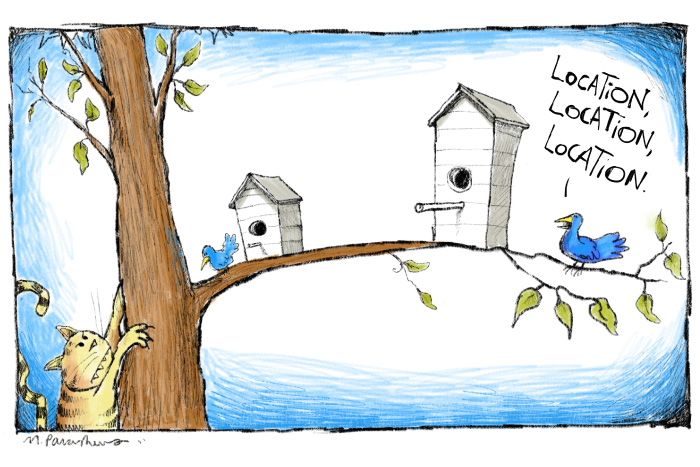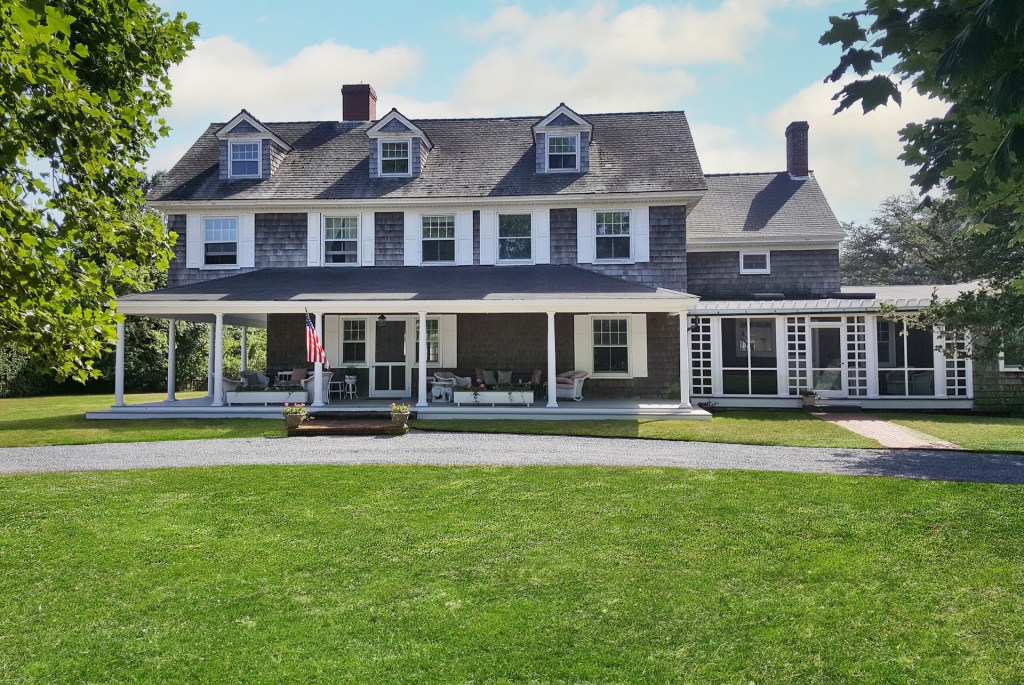My Killing: How I Doubled a Hamptons Real Estate Investment in Three Years

Real estate is such a big deal today. There are houses for sale on Gin Lane for $55 million. A teardown in the Georgica Association just sold for $12 million. Some of the big parcels on the ocean on Further Lane in East Hampton are for sale for over 100 million.
Well, I think this a good time to tell you about the real estate killing I made years ago. I bought a house in the Georgica section of East Hampton, just a short walk from Georgica Pond, and when I sold it three years later, I more than doubled what I paid for it. Not bad. Here are the details.
The Georgica section of East Hampton lies between Ocean Road, the Atlantic Ocean, Georgica Pond and, on the north, the Montauk Highway.
The house I bought had three bedrooms, a breakfast room, a kitchen, dining room and living room. It also came with a two-car garage and a lovely maple tree in the backyard that brought shade to a nice wooden deck I built off the back. All together, a cute little cottage. Right in Georgica.
Then there were the not-so-good things about the house. One was that you entered the house from the back because the front of the house sat just 50 feet from the Montauk Highway, where the cars back then—before catalytic converters—rumbled noisily and smokily by. On the other hand, all this happened in the 1960s, so there weren’t many cars then. But before this tale is finished, I will tell you about the head-on collision.
I bought this little house in 1967 for $9,250. This came about because it was summer and I couldn’t afford a summer rental. And then I learned about the Grogans. Mr. Grogan had a rug shampooing business and had an English wife who’d had enough of him. Divorce was imminent. Neither party would let the other either live in the house or rent it out.
I met Grogan on a May morning at the house, before he started drinking for the day. He came in a pickup truck. He told me I could take my chances with his wife. All he wanted me to do was pay the mortgage, which she had stuck him with. I didn’t have much money then. Houses rented for about $5,000 a summer then. The mortgage was $63.14 a month. I said yes.
The house sat on less than a quarter-acre. It was put there by a WWI veteran who had answered the call of the commander of Fort Upton in Yaphank, who, after the war was over, offered up all 55 of the barracks buildings to any vet who had $1 and a willingness to haul it away. That was in 1919.
The house had been put on a wagon and hauled out to East Hampton by mules, according to a neighbor, Mrs. Collins, who talked to me over the fence when I moved in. She also asked if I was getting married. I was 26. Should have been by now, she said. Not yet, I said.
The former Mrs. Grogan came by two days after I moved in. I opened the sunroom door a crack. She told me I had to get out. I handed her the business card of my lawyer and told her I’d changed the locks. She went away. She would soon find out I could stay there all summer, even with eviction papers.
The three bedrooms were each large enough for a bed and someone to walk inside and climb into it. There was no central heating. But there was a gas furnace in the dining room, which warmed the little house nicely. The house was a standard 800-square-foot barracks, 20 by 40. The living room occupied the full 20 feet width up by the street.
In the fall, they offered me the house for $10,000. Friends told me it was worth $14,000. I lowballed it and they sold it to me for $9,250.
A year later I was married, and three years later my wife was pregnant when two cars had a head-on collision in front of the house. Nobody died. But we were the first on the scene with buckets of water and towels for the wounded. It was not hard to decide to move on.
I put the house up for sale for $25,000. And settled for $22,500. I didn’t argue what was probably a lowball price. The reason was that I’d had the “house for sale” ad in Dan’s Papers, just a bantling at that time, and I got the offer over the phone at 10 p.m. while listening to sportscaster Howard Cosell narrate a boxing match I was watching. It was a close fight and at a very intense moment when the phone rang. So I just said okay.
I have some wonderful memories of that house.
One evening, my wife and I went to the John Drew Theater to watch a summer stock performance of How to Succeed in Business Without Really Trying. There was no cast party afterwards, so I invited everybody over. Champagne was in paper cups, potato chips and cheese were on paper plates. The dancers performed the grand finale in the living room, which included heavy stamping on the floor. When the party ended and everybody left, I found, while cleaning up, that the living room floor was very bouncy. Something was not right.
In the morning, I crawled under the house with a flashlight and found that the finale had caused the central floor beam to pound the cedar post under it further into the ground. The beam now floated over the post. You could put your hand in between. I got a sledgehammer and an axe head and went back under to pound the axe head into the breach with the sledgehammer. It was all jammed in there now just fine. No further trouble.
It was probably discovered like that when, decades later, some city people who paid six figures for the place had the house movers in to pick up the house and move it to a cinderblock foundation in the back of the property and came across this jerry rig with the axe head. What is this all about?
I think the house today would fetch $1 million.



